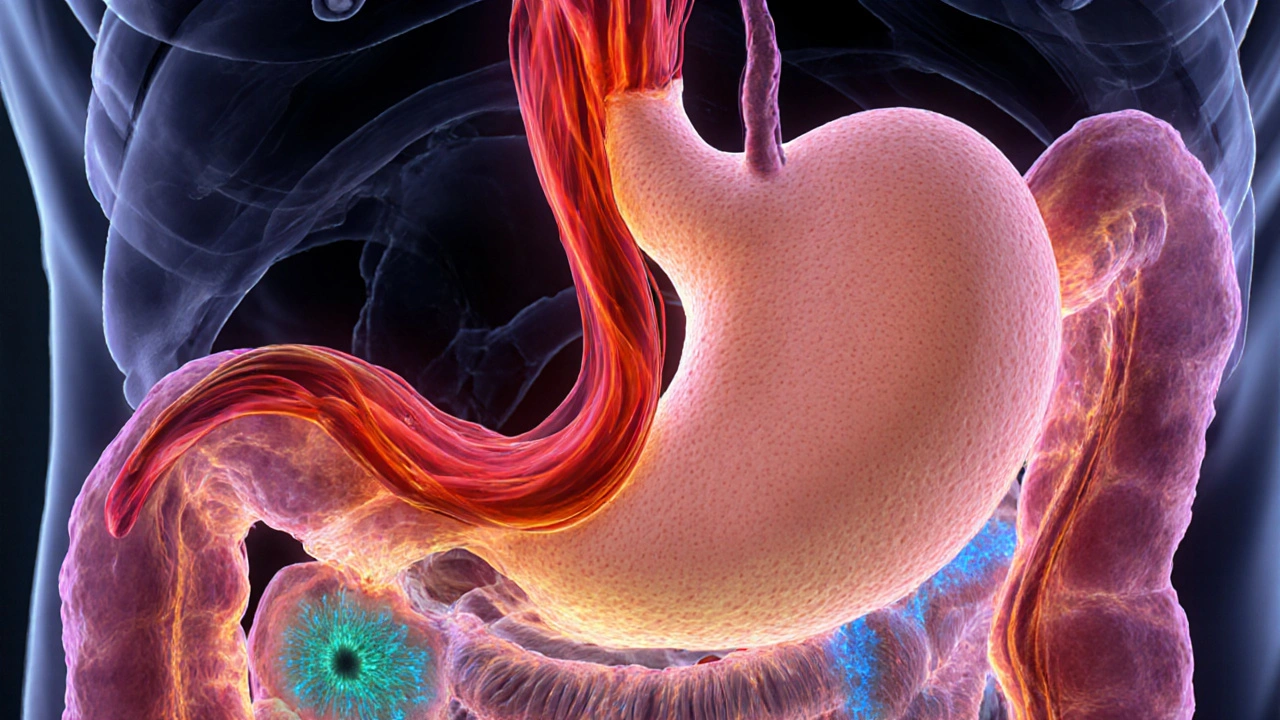Gastrinoma: What It Is and Why It Matters
When you hear the term gastrinoma, you’re looking at a rare neuroendocrine tumor that pumps out too much gastrin, a hormone that stimulates stomach acid production, also known as gastrin hormone. This excess gastrin drives the classic symptoms of Zollinger‑Ellison syndrome, a condition marked by severe peptic ulcers, diarrhea, and abdominal pain caused by acid hypersecretion, sometimes called ZE syndrome. In practical terms, a gastrinoma is a type of pancreatic neuroendocrine tumor, a growth that can arise in the pancreas or duodenum and may spread to nearby lymph nodes. Understanding these connections helps you see why diagnosing and treating a gastrinoma requires a mix of labs, imaging, and sometimes medication that blocks gastrin’s effects, like somatostatin analogs, drugs that curb hormone release and reduce acid output.
Key Points About Gastrinoma
First, the disease’s hallmark is an overproduction of gastrin, which you can confirm with a fasting serum gastrin test. Levels above 1,000 pg/mL usually point to a gastrinoma, especially when paired with a secretin stimulation test that shows a paradoxical rise in gastrin. Imaging tools like endoscopic ultrasound or somatostatin receptor PET scans then locate the tumor. Once you have a clear picture, treatment branches into two main paths: surgical removal of the tumor when it’s resectable, and medical management for unresectable or metastatic cases. Surgery aims for a cure, but many patients also need lifelong acid‑blocking therapy—high‑dose proton‑pump inhibitors (PPIs) stay on the front line, while somatostatin analogs such as octreotide or lanreotide help control hormone spikes and slow tumor growth.
Second, gastrinoma doesn’t exist in a vacuum. Its behavior ties into broader concepts like the secretory profile of neuroendocrine tumors, the role of the gastrin‑CCK‑B receptor in acid secretion, and the risk of developing multiple endocrine neoplasia type 1 (MEN 1). If you have MEN 1, you’re more likely to see multiple gastrin-producing tumors, which changes the surveillance strategy—regular imaging and hormone checks become routine. Finally, patients often wonder about lifestyle tweaks. While diet won’t shrink the tumor, avoiding foods that further irritate the stomach (spicy, acidic, or caffeinated items) can ease ulcer symptoms. Staying hydrated and using antacids between meals adds a layer of comfort.
Below you’ll find a curated list of articles that dig deeper into each of these areas—comparisons of drug options, step‑by‑step guides for diagnosis, and practical tips for living with the condition. Whether you’re a patient, a caregiver, or a health‑care professional, these resources will give you actionable insight and a clearer picture of what managing a gastrinoma looks like in real life.
Zollinger-Ellison Syndrome Pathophysiology Explained
Explore how gastrin‑producing tumors drive extreme acid secretion in Zollinger‑Ellison syndrome, its genetic links, symptoms, diagnosis, and treatment.
Keep Reading
